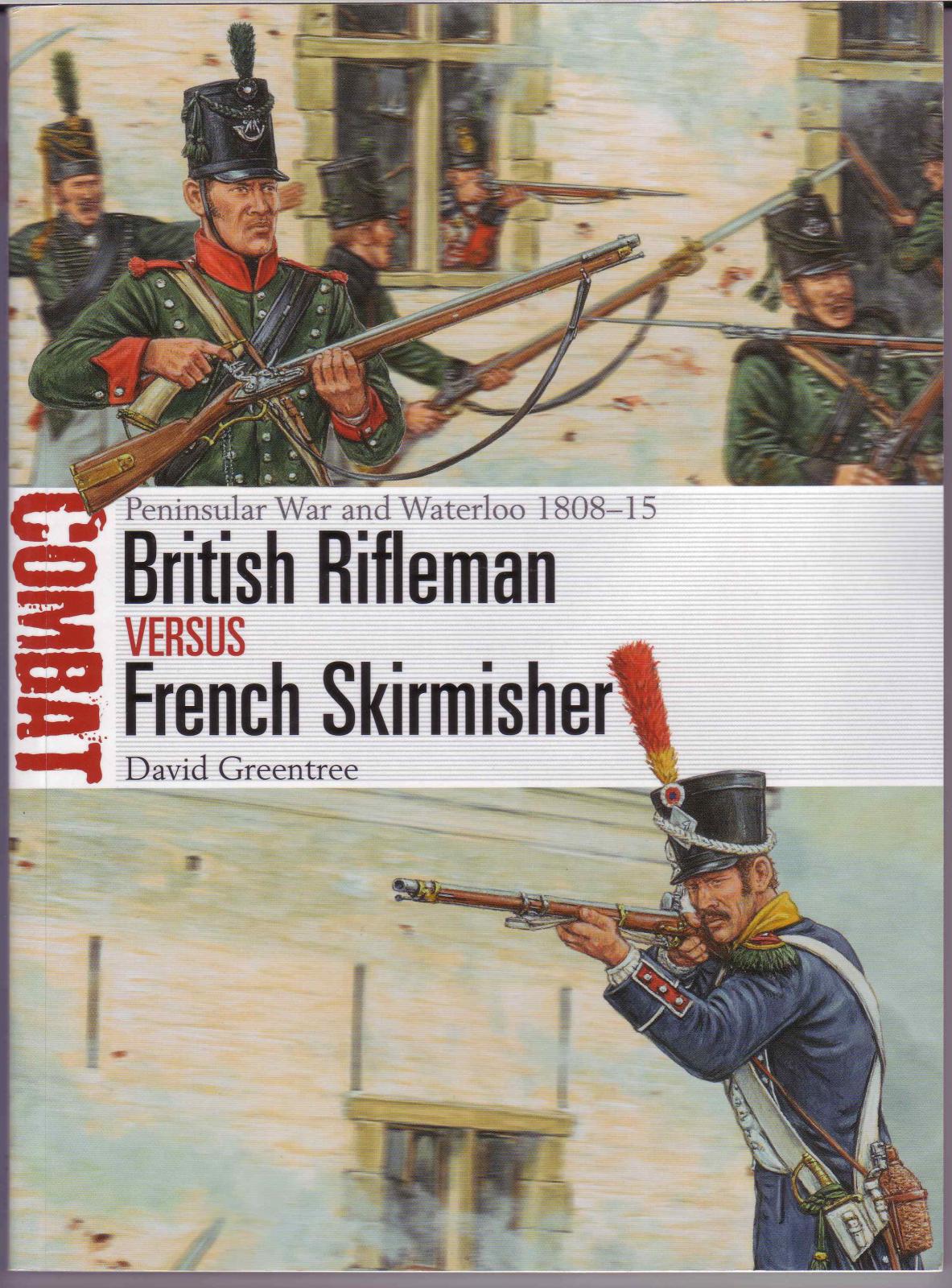British Rifleman vs French Skirmisher- Peninsular War and Waterloo 1808-1815
The book is set up to introduce the groups involved- British Light Infantry versus French Light Infantry (Skirmishers). Each group has the specifics from recruitment, formation of the group and morale discussed along with very well detailed drawings of each soldier showing their weapons, dress and equipment. One thing detailed early on was the use of muskets versus rifles. The British used Baker riffles with smaller rounds, rifled barrels and an increased range. He French used a Charleville Dragoon Musket with larger caliber rounds and no rifling. There are specific sections on the training of each group, its weapons and their command and control strategy.
The table of contents looks like this:
- Introduction
- Chapter One - The Opposing Sides
- Chapter Two - Roliça - Aug. 17, 1808
- Chapter Three - Barba Del Puerco - March 20, 1810
- Chapter Four - La Haye Sainte - 18 June 1815
- Chapter Five - Analysis
- Chapter 6 - Aftermath
- Unit Organizations
- Bibliography
- Index
The next three sections cover three battles over the course of seven years. The first, the Battle of Rolica in and around August 17, 1808 and located in Portugal. The Portuguese supported the English, and both defeated an undermanned French force. This section covers the build up to the engagement and the movement of the troops along with a map showing the movements of the combatants that day. This is also well illustrated with period pictures of the area and uniforms.
The Battle of Barba del Puerco is next and occurred on 20 March 1810. Lastly, the Battle of La Haye Sainte is addressed. The last two receive the same treatment as the first two with coverage, maps and illustrations. It shows the movement north of the battle from Portugal to Belgium.
Chapter 6, The Aftermath covers the disbandment of the groups and their subsequent histories. The unit organizations are also broken down at this stage.
This is a wonderful historical reference of some critical but lesser know battles to many. Lavishly illustrated with maps, pictures and illustrations, it is a very interesting read. From a modelers perspective, the book has great reference drawings for uniforms and equipment from this time period. Highly recommended to all interested in the history or soldiers of the area.
My thanks to Osprey for the opportunity to review this excellent book and to IPMS/USA for the change to tell people about the book.








Comments
Add new comment
This site is protected by reCAPTCHA and the Google Privacy Policy and Terms of Service apply.
Similar Reviews